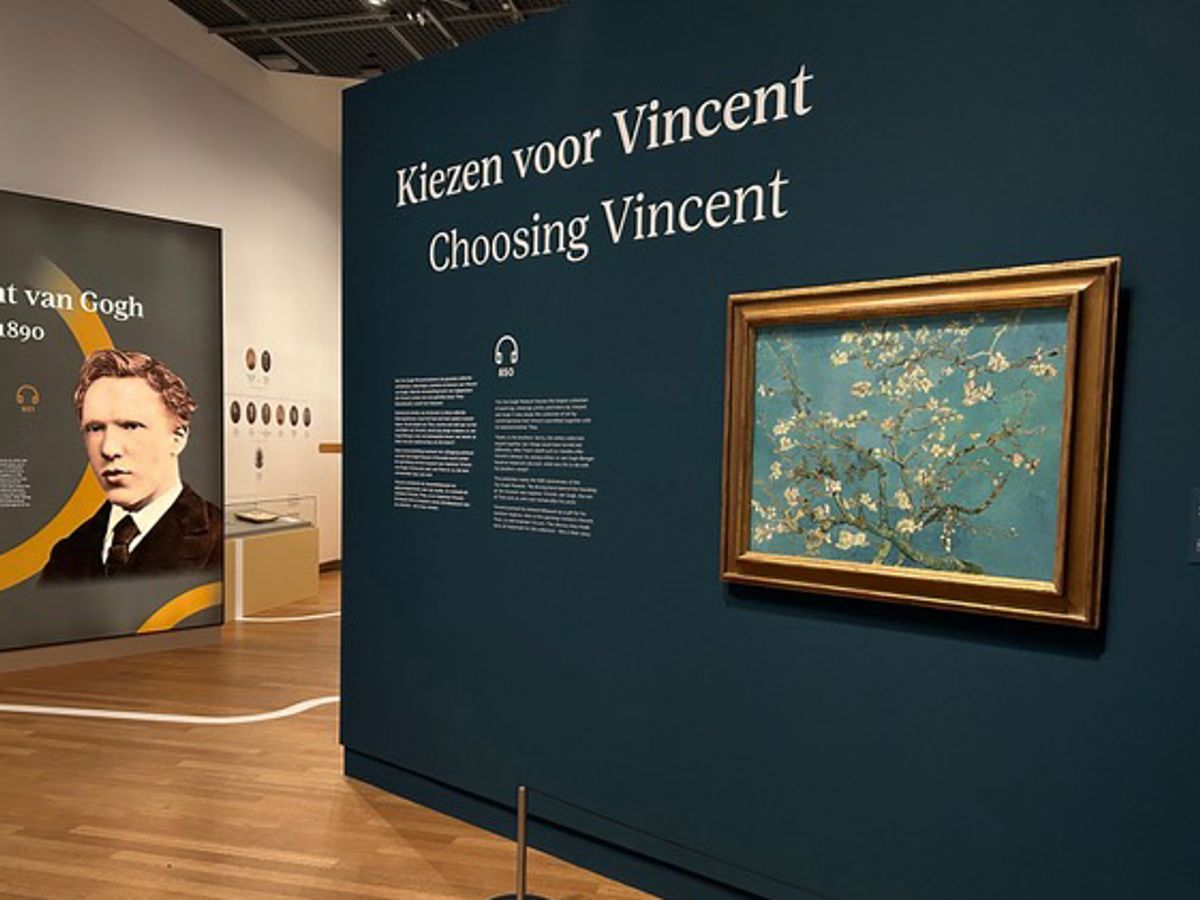Most visitors to the Van Gogh Museum don’t think about why it has so many of his paintings, but they were given by the family to create what soon became the world’s most popular museum devoted to a single artist. It opened in Amsterdam in June 1973.
Choosing Vincent: Portrait of a Family History (until 10 April) tells that story. “Choosing Vincent” sounds slightly confusing in English, although in Dutch (Kiezen voor) the phrase may be clearer. As Lisa Smit, the exhibition’s curator, puts it, Vincent’s brother Theo, sister-in-law Jo Bonger and nephew Vincent Willem chose "to dedicate themselves to the artist and his work”.
The exhibition’s presentation is orientated towards “family” visits, setting out to appeal to all ages, although for dedicated Van Gogh fans it offers a rare opportunity to see works of art, documents and objects that are only very occasionally displayed and in some cases are being shown for the very first time.
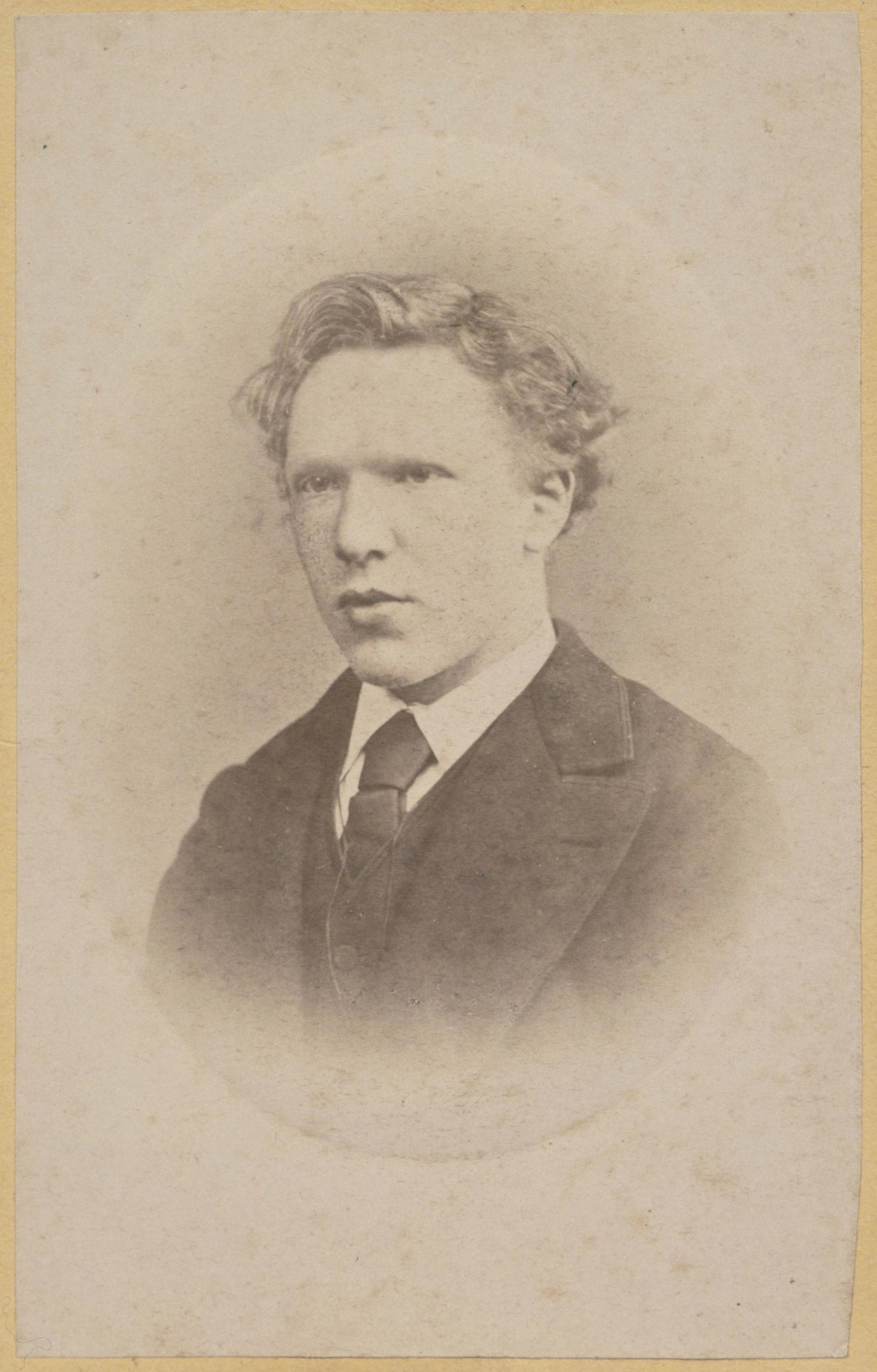
Photograph of Vincent van Gogh, aged 19 (January 1873), taken by J.M.W. de Louw, The Hague Van Gogh Museum, Amsterdam (Vincent van Gogh Foundation)
The first document is Vincent’s birth registration, recording his arrival in the Dutch village of Zundert on 30 March 1853. This is followed by what is the only known photograph of him, taken at the age of 19, a few weeks before he set off to become a trainee art dealer in London. There is only one surviving copy of this small carte-de-visite photograph, with the image barely 2in high. It is so precious, which means that it has not been shown for decades because exposure to too much light would cause fading.
One of the surprises is that Vincent’s mother Anna painted watercolours as a young woman. On display is Still life of Basket of Flowers, dated 1844, when she was 25. Although it may have been done from life, the work is more likely to have been been copied from an illustration. This watercolour has probably never been publicly exhibited since its creation nearly two centuries ago.
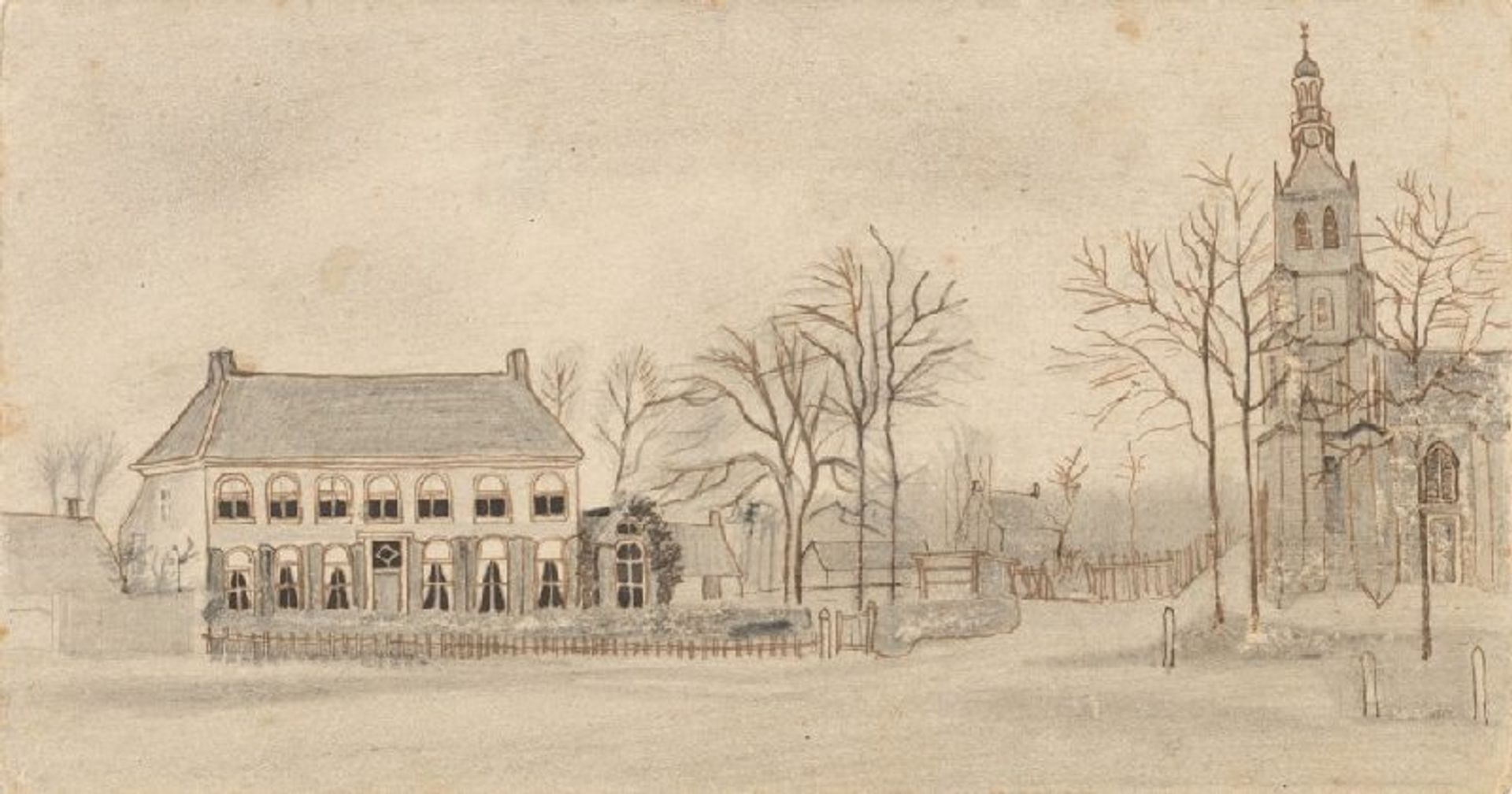
Vincent van Gogh’s Vicarage and Church at Etten (April 1876) Van Gogh Museum, Amsterdam (Vincent van Gogh Foundation)
Another delight is a small sketch (the size of a postcard) of the family parsonage at Etten, in the south of the Netherlands. One of the earliest of Van Gogh’s adult drawings, it has a naïve quality, but successfully conveys a vivid impression of their rather spacious home, adjacent to his father’s church. It was drawn just a week or so after he had been sacked as an art dealer in Paris. For Vincent, at this difficult time, the sketch may have been partly a way to reconnect with his family—or to demonstrate his determination to be creative.
Moving on through the exhibition, another surprise for visitors will be an encounter with an ornate veneered cabinet, a family heirloom crafted in the 1790s by the carpenter Hendrik Vrijdag, the great-grandfather of Vincent and his brother Theo. What makes it so special is the use to which it was later put: Theo used it to store hundreds of the drawings that Vincent gave him. Tradition has it that Theo also kept nearly a thousand of Vincent’s letters in it.
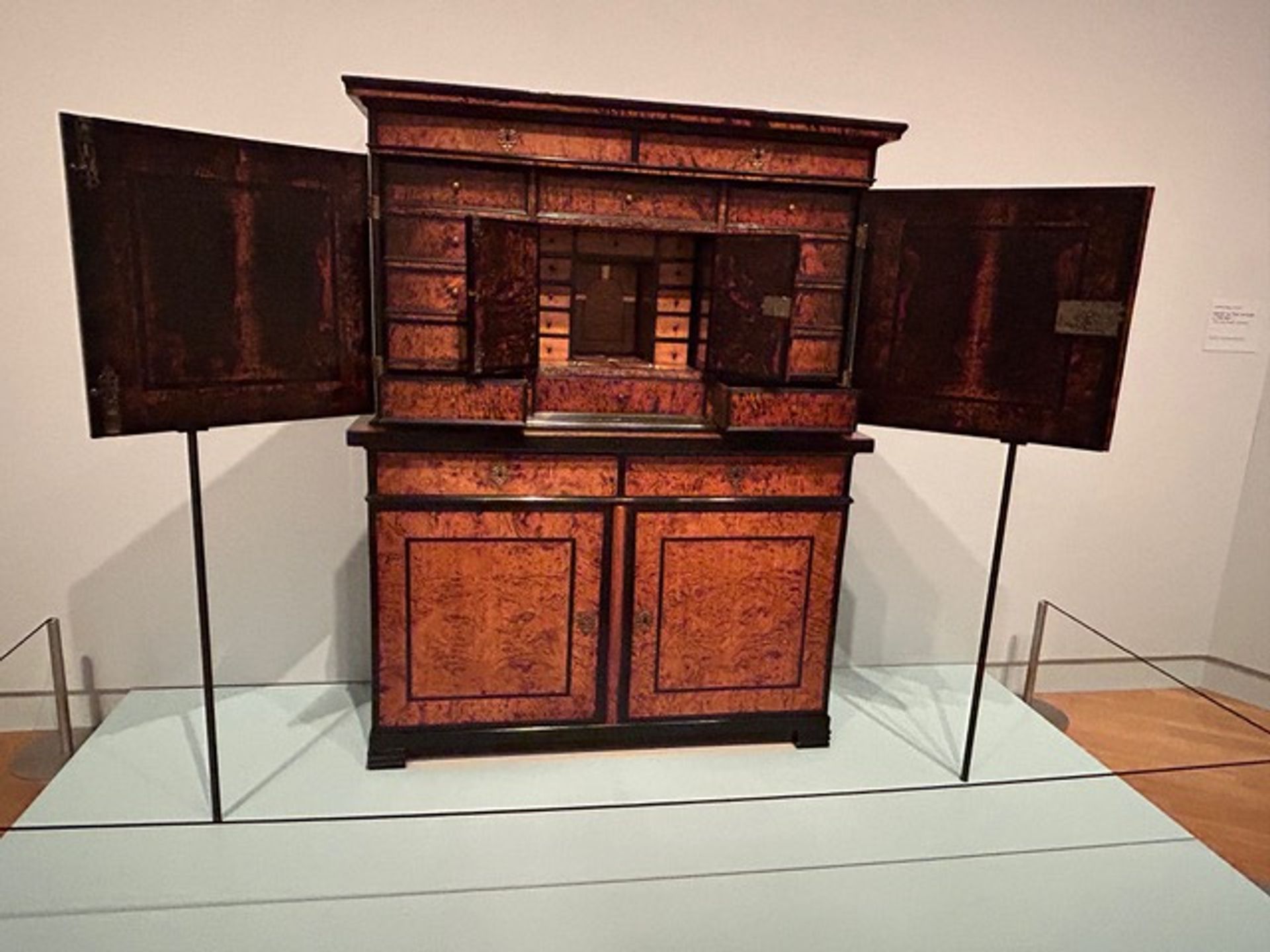
Cabinet (1790s) made by Hendrik Vrijdag, great-grandfather of Vincent and Theo Photo: The Art Newspaper; Van Gogh Museum, Amsterdam (Vincent van Gogh Foundation),
Along with curiosities (such as a brass milk jug used in a Van Gogh flower still-life and a swatch of bedroom curtain fabric from the Paris apartment of Theo and Jo), there are also great paintings. These include Quinces, Lemons, Pears and Grapes, with its painted orange frame (September-October 1887), The Harvest (June 1888) and Almond Blossom (February 1890).
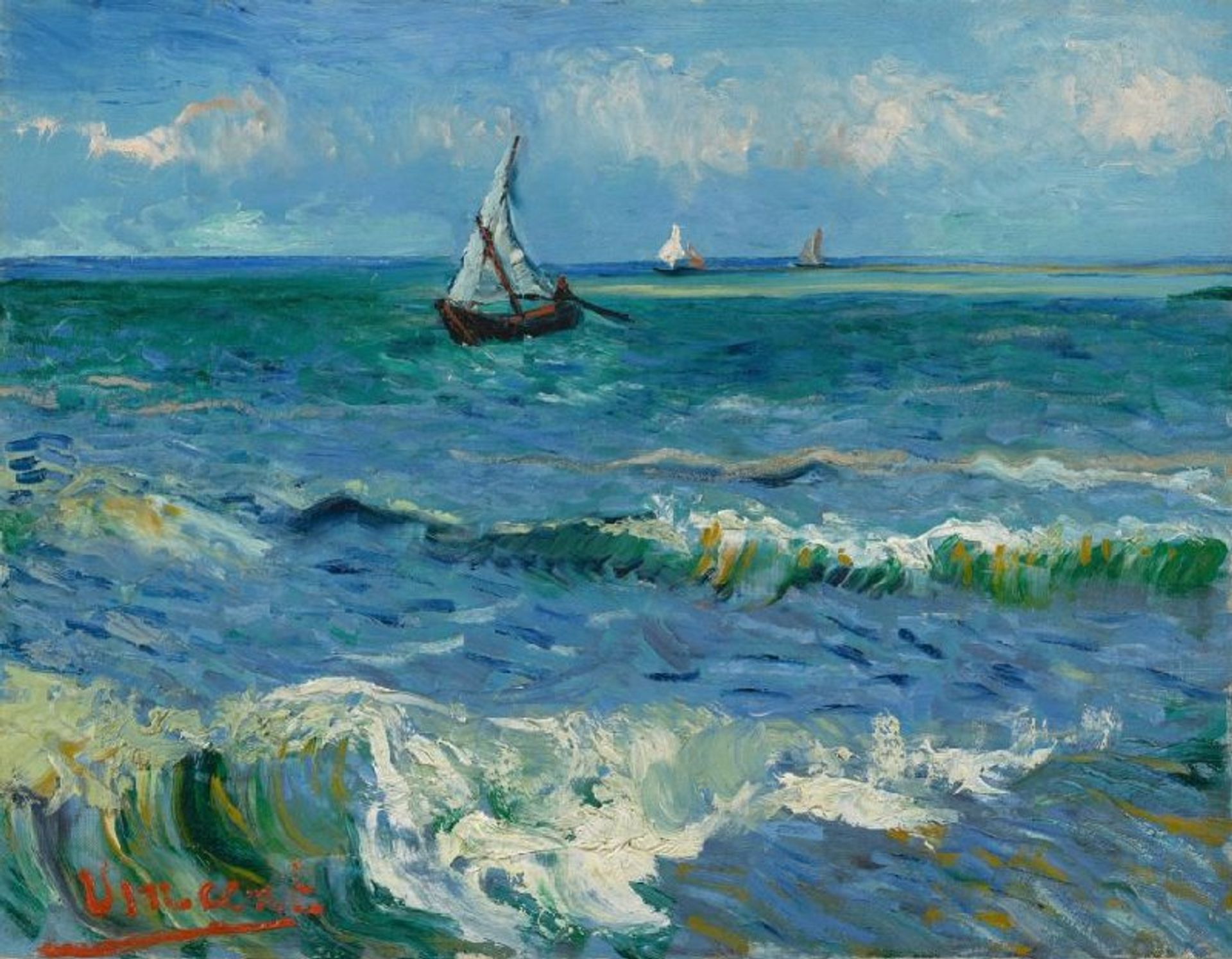
Vincent van Gogh’s Seascape near Les Saintes-Maries-de-la-Mer (June 1888) Van Gogh Museum, Amsterdam (Vincent van Gogh Foundation)
The exhibition’s catalogue reveals that in 1907, Seascape near Les Saintes-Maries-de-la-Mer (June 1888) was hanging in the room of Vincent’s nephew, when as a young man he was a studying engineering in Delft. In a student’s bedroom, the painting must have been at considerable risk, but fortunately it survived the ordeal.
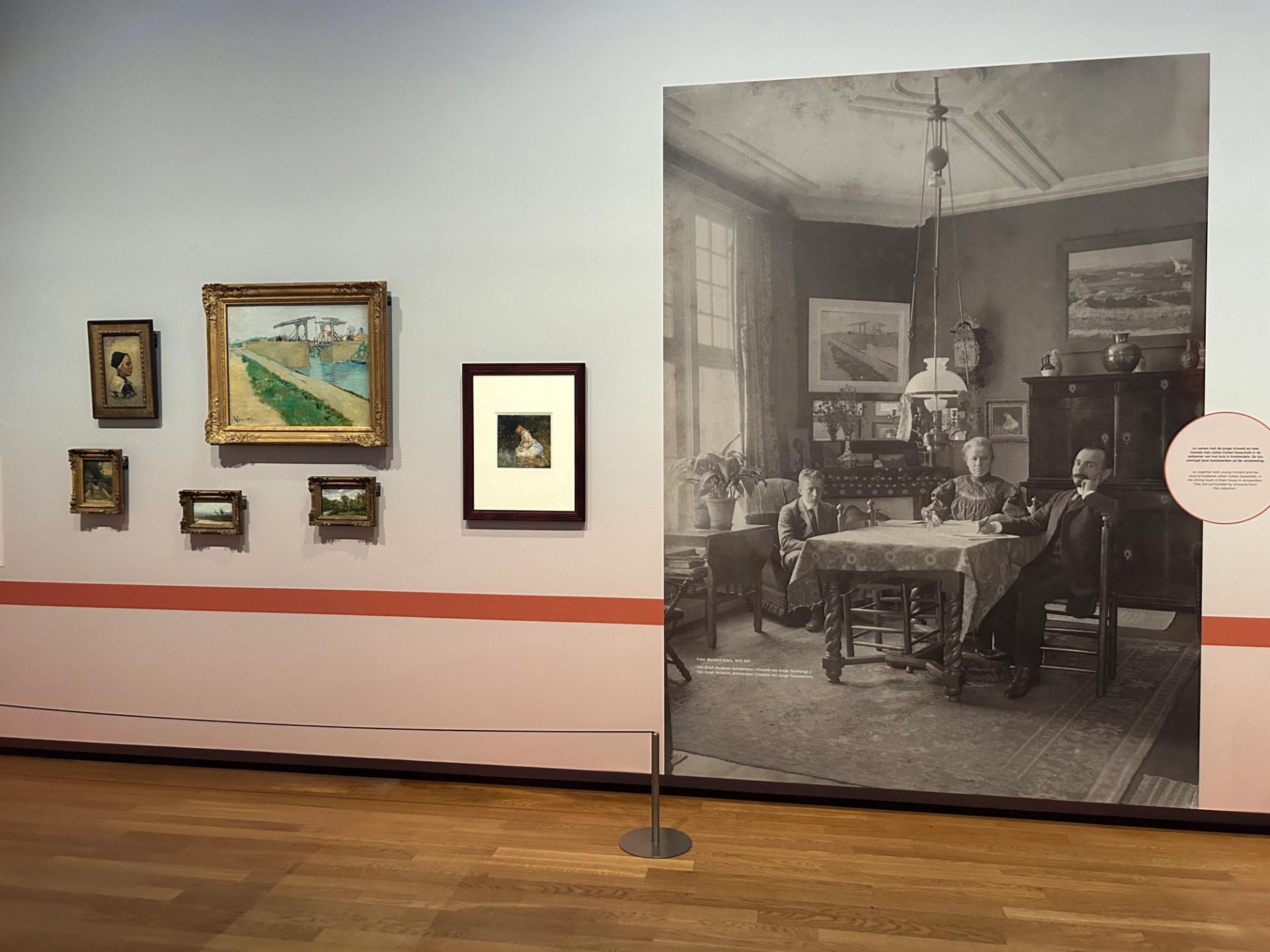
Exhibition installation view with a greatly enlarged photograph of Jo Bonger, her then-husband Johan Cohen Gosschalk and her son Vincent Willem, together with some of the original paintings that hung on the wall of their Amsterdam dining room (1910-11) Credit for paintings: Van Gogh Museum, Amsterdam (Vincent van Gogh Foundation); photograph: The Art Newspaper
It was Vincent Willem, known as “The Engineer” (to distinguish him from his uncle, the artist), who in the 1960s gave the family collection to establish the Van Gogh Museum. The Van Gogh works comprised 200 paintings, 500 drawings and more than 800 letters. In addition, there were 80 paintings by his contemporaries, 150 of their drawings and prints, 600 Japanese prints and more than 2,000 reproduction prints.
The museum building, initially designed by the distinguished Dutch architect Gerrit Rietveld, is still regarded as an architectural triumph. (An exhibition extension was added in 1999.) It may seem paradoxical that a 19th-century artist should have been given a modern home, but with eventually two million visitors a year (before Covid-19), this was essential.
Thanks to the family’s decision to “choose Vincent”, a quarter of the artist’s paintings, half his drawings and nearly all of his letters have been preserved in one museum —rather than cashed in at auction and scattered to the four winds.
• Choosing Vincent: Portrait of a Family History, until 10 April, Van Gogh Museum, Amsterdam


